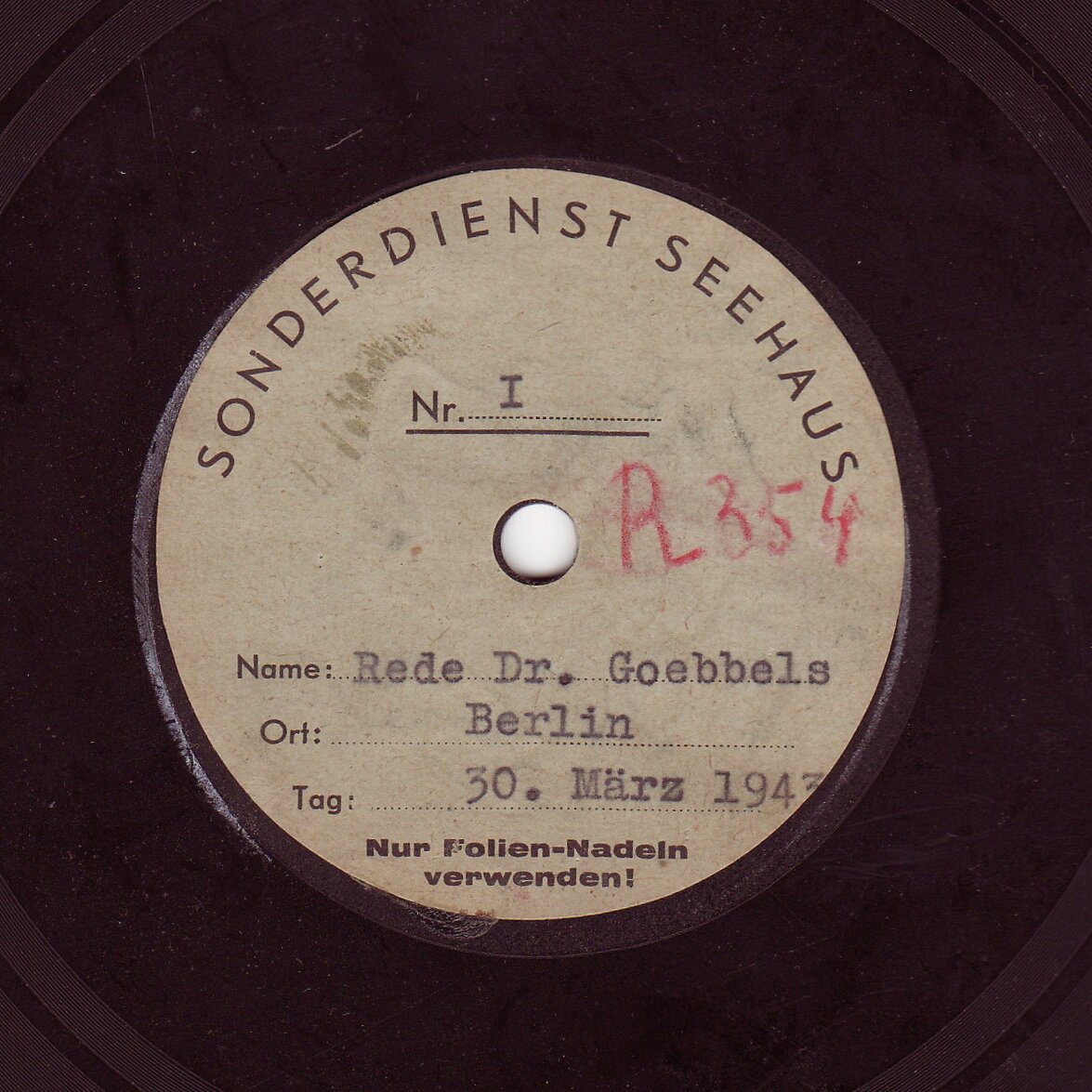A few months ago I was contacted by American record collector in connection with a strange set of discs he had come by. He has since very generously allowed us to take them into our archive. Although they are not x-ray records, they are of the same family and are interesting for several reasons.
Firstly they are made of Decelith - this was a proprietary pvc based material produced by a German Company ECW that was used to make commercial flexible blanks for recording on before the war (the company still exists). The recording would have been done by using a recording lathe (see THIS POST for more details on how); they are examples of what we call ‘self-made discs’, recorded one by one in real time. They would have been recorded on Neuman or Telefunken lathes - the very machines that were brought back to the USSR after the war and were copied by Soviet bootleggers.
The lathe recording technique was used from the 1930s onwards in various ways: in recording studios to make test records and one-off recordings; in radio studios to make archive transcriptions of programs; in coin-operated booths to make souvenir recordings for the public; by journalists to make reports in the field; by amateurs to make home recordings - and of course by Soviet bootleggers to make x-ray discs.
The bootleggers and sound engineers in places like Hungary turned to x-ray as a recording medium because they could not obtain the Decelith blanks used by professionals.
The content of the discs Gregory found is also interesting. They were manufactured in the Third Reich during the early 1940s by the SONDERDIENST SEEHAUS, a communications hub used by the Germans during the war to monitor foreigh broadcasts. They are mainly recordings of American AM radio broadcasts of speeches by leaders like Churchill and Roosevelt but there are also some German broadcasts with speeches by Goebbels for instance. The discs are 10 inches in diameter, some are single, some are double sided and they play at 78rpm. All in good condition.
The story of how the collector came by the records is curious too. For three years around 2010, he managed all of the donations coming into a Brooklyn Goodwill thrift store where he got first chance at buying the books and records that came in.:
“One night, a couple came by with a van full of boxes. The husband's father had died and he was a true hoarder. He collected everything: toys, books, records, papers, magazines, and junk, Lots and lots of junk. So the couple were tasked with emptying the house. The first time, they dropped off maybe 35 boxes. I remember taking all the boxes in and starting the process of opening and investigating. Somewhere in the middle of my work, I find the first 10" German disc buried in a box. Just one. I was fascinated. I had no idea what it was but I knew it was something special. By the end of the night, I found two more.
The couple came back two nights later with another 40 boxes. I asked them if there was any rhyme or reason to how they packed the boxes and they said no. they were literally just putting anything in and sealing it when it was full. That night, I found another 4 discs. Over the course of the next 2 weeks, I believe I acquired them all. (around 25) I would even come in on my nights off just in case the couple came back with more boxes. I never asked them about the discs because they both had such disdain for the father's hoarding that they treated it all as garbage and unwanted.”
As I found my first x-ray recording in a flea market (in St Petersburg) you can imagine that i enjoyed this story very much.
Thanks so much for this contribution
Roosevelt speech on Decelith

